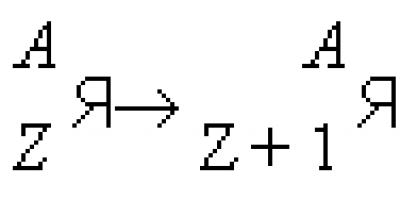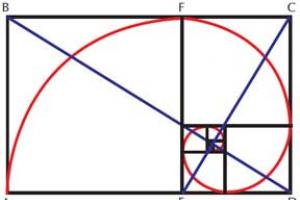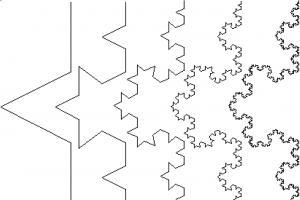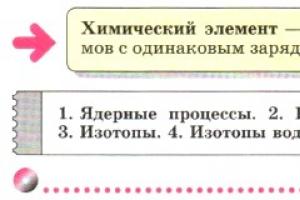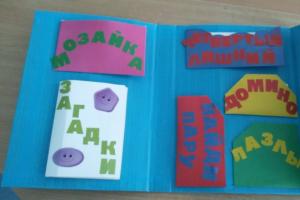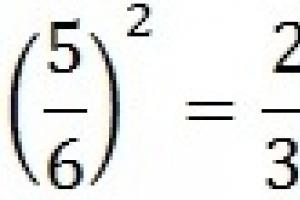Irina Lymar
Target- children’s mastery of mathematical methods of cognition using educational games, repetition and consolidation of learned material.
Tasks:
1. development of sensory ways of cognition;
2. improve knowledge about geometric shapes;
3. development of logical thinking, visual memory, imagination, fine motor skills;
4. cultivate independence, the ability to understand the task at hand.
Lapbook"Geometric figures" is aimed at repeating and consolidating primary ideas about the properties and relationships of objects in the surrounding world (shape, color, quantity, part and whole; it contains educational games for repetition and consolidation geometric shapes.
I present to your attention a laptop " Geometric figures":
The laptop itself consists of several mathematical games:

Game No. 1 "MOSAIC"


Game No. 2 "FOUR TWO"


Game No. 3 "FIND A PAIR"


Game No. 4 "PUZZLES"


Game No. 5 "DOMINO"


Game No. 6 "RIDDLES"



Children can pick it up and play at any time, either independently or with a group of children.
Thank you for your attention!
Publications on the topic:
"Volume geometric shapes" Summary of GCD in the preparatory group on the topic: “Volume geometric shapes.” Objectives: Practice counting within 20 forwards and backwards.
Summary of the educational event “Geometric Shapes” Summary of the educational event (lesson) “Formation of elementary mathematical concepts” Topic: “Smart exercise” Age.
Summary of the lesson on FEMP in the preparatory group “Geometric Figures” Goal: to systematize and consolidate the mathematical concepts of children in the preparatory group. Objectives: Educational: consolidate knowledge.
The formation of elementary mathematical concepts in younger preschoolers is a significant component in the development of a child’s “picture of the world.” In Game.
GCD in mathematics “Geometric figures” GBOU secondary school s. Orlovka joint venture d/s "Beryozka". Plan-summary of direct educational activities in a mixed-age group from.
GCD in the second junior group “Geometric Figures” State budgetary preschool educational institution kindergarten No. 4 of the Primorsky district of St. Petersburg Abstract of continuous.
Content
Previously, information was consolidated in institutions for preschoolers and schoolchildren through its repetition, presentation in the form of abstracts, and design work. A lapbook (children's folding book) is a new method of studying and memorizing a specific topic, which is built according to a template and consists of many pockets, tabs, windows, movable elements, pictures, etc.
What is a lapbook
The word lapbook came to us from America, literally translated as “knee book” (lap - knee, book - book). These are a kind of homemade interactive folders, including pockets, doors, windows, cards, and movable paper parts, with the help of which the child learns and consolidates the material he has covered. They are dedicated to a specific topic, being the final stage of its study.
What is it needed for
Lapbooks help in consolidating the material covered, understanding and remembering the contents of the book, conducting a research project, introducing children to the processes (searching for information, sorting it and analyzing it). Such a learning tool is one of the areas of partnership between an adult and a child, equating them to each other. The content depends on the topic that requires study and mastery.
In general, the lapbook includes not only educational moments, but also an educational process that helps to understand the needs of children and help create conditions for independent exploration of the world. The “knee book” can be compiled by adults (parents, teachers, educators) and should include the following points:
- Strength. In the hands of children, a paper interactive folder will quickly turn into a rag, so it is better to make it from durable materials.
- Aesthetics. It must be bright, colorful, and eye-catching, otherwise children will not want to play.
- Information content. Present the information included in the lapbook in a language that the child understands, fully revealing the topic.
- Availability. Children can independently choose the section they like. Signatures, long texts with descriptions, recommendations and instructions will complicate the game and suppress interest in the book.
- Variability. All sections of the topic included in this learning tool must be done in different versions, suggesting different ways of mastering information.
- The ability to use this collective book simultaneously by several people, including an adult.
Kinds
This book-folder has an A4 format when folded and an A3 format when opened. They are divided into groups according to the method of presenting information, structure and content. There are these types of lapbooks:
- Encyclopedic. The information is presented like an encyclopedia.
- Fairy-tale, cartoon. Such lapbooks are made based on a fairy tale, a cartoon, and contain a figurine of your favorite hero, which allows you to play with him, come up with different stories, and play out scenes.
- Thematic. They include songs, poems, fairy tales, pictures - everything that the child likes on a specific topic.
- School. Contains information regarding school subjects. This is a great way to consolidate the material and prepare for the test.
Lapbook for preschoolers
A thematic laptop for kindergarten pursues several goals: develops independent research activities, creative thinking, observation, cognitive activity, and generates interest in the object of study. For parents, a folding book helps strengthen relationships with children, expand their knowledge on a specific topic, and achieve self-realization. Such teaching aids assist preschool teachers in introducing a new form of working with children and organizing interaction between parents and children.
Lapbook technology for preschoolers
Compared to older children, preschoolers find it difficult to perceive information by ear, especially when there is a lot of it. “Knee books” help make classes bright, emotional and exciting with the help of visual and tactile perception. A laptop for preschool children promotes the development of memory, creativity, and communication skills. With the help of a creative task, children study the topic with pleasure, repeat what they have learned, and systematize the information received.
Thanks to its colorfulness, the folder contributes to the development of artistic and aesthetic skills in the child, introducing him to the field of art. The technology for creating a lapbook for preschool education consists of the following steps:
- Selecting a topic. She can be anything. Please note that for children in the younger group of kindergarten, information can be presented in a global form, for example, general information about animals. Older children need specifics, that is, a lapbook needs to be made about one animal.
- Planning. Decide what points and facts you want to highlight and reveal.
- Creating a layout. Draw a small copy of the future folding book in detail.
- Pasting a laptop.
Lapbook themes
One of the important points in creating a lapbook folder is determining the topic of the lesson. It can be absolutely anything, depending on what you want to teach your child. A laptop for kids is often an overview, introductory, containing general aspects and concepts. School-age children are given a thematic folder to help them visually master and consolidate the topics of specific subjects. The didactic material contained in them must include complete information and be as useful as possible in studying the lesson.
By profession
The focus of this interactive book-folder is a general excursion into existing professions. Here it is important to explain to the child what the principle of work of a person in a certain specialty is, to help navigate the world of professions and understand who wants to become who. Such a lapbook may contain the following educational sections and auxiliary elements:
- What is each specialty needed for, using pictures and cards in pockets. For older children, you can attach mini-books or accordion books containing text descriptions.
- Demonstration of overalls on cards, but it is better to make a small paper man and several sets of clothes. This way the child will be able to identify and dress up the doll himself.
- Related attributes, tools in the form of pictures in your pocket.
- Envelope with riddles.
- Envelope with small coloring pages.
- Rotating circle with an arrow - the game “Who works where?”

In biology
A biology laptop facilitates the study of different classes of living organisms (birds, animals, insects, mushrooms, etc.). Preschoolers will be interested in learning about the evolution and interaction of all life on Earth, built in the form of chains with pictures, cards with descriptions of living beings, their role in nature. Such didactic material is presented in a generalized form. Concretize the information by creating a folder about a specific class or representative of living beings.
Mathematics
The math folder for preschoolers is aimed at developing the concept of numbers, numbers, and counting. Place here cards with poems about numbers, riddles, mini-pockets containing geometric shapes, coloring pages, easy addition and subtraction tasks. It is better for children of primary school age to build a laptop in the form of a house from several pages and place in it:
- cards for training writing numbers;
- chests filled with math-themed riddles;
- clock for learning to tell time;
- a pocket with coloring books, where each number corresponds to a specific color;
- mini-folder with tasks;
- a cabinet with samples of pictures made up of geometric shapes and an envelope with shapes, etc.
Around the world
Educational lapbooks about the world around us help expand the horizons of children’s knowledge about the seasons, weather phenomena, plants, etc. It is better to do them separately for autumn, winter, spring, winter themes, providing them with the following sections:
- a mini-book with a fairy tale about the season;
- envelopes with cards: signs of the season, riddles, poems;
- opening circles with the distinctive features of each month;
- pockets with puzzles, coloring books;
- colorful illustrations, attributes inherent to a particular time.
About family
Such material forms the child’s idea of the family, the role of each member in it, and fosters respect for relatives. You can include in the folder:
- An envelope with cut-out pictures of each family member to be collected.
- A pocket with multi-colored stripes from which you need to make a rug of a certain shape.
- A pocket with figures of people who make up the child’s family with a description of each person.
- A set of pictures with scenes from life, the child must compose a story from them.
- Cards depicting cases, they must be matched with each family member.
- A little book with riddles.
Animals
A didactic manual about animals tells about specific representatives of this class. When compiling such a lapbook, make sure you have the following elements:
- photo of the animal;
- map with habitats;
- pocket with a picture puzzle;
- a rotating circle depicting the food consumed by the animal being studied;
- mini-book with interesting facts;
- a strip where you can enter the status of the animal in the Red Book;
- envelope with coloring book;
- chamomile with riddles and proverbs on the petals.

On speech development
A laptop for speech development is aimed at eliminating problems in this area in children: pronouncing sounds correctly, composing sentences and short stories using prepositions, being able to understand the meaning of poems, and retelling them. When compiling such a lapbook, use:
- sayings, counting rhymes, riddles;
- poems, parables, stories;
- cards with letters, words;
- coloring books;
- pictures for their oral description;
- envelopes with tasks: name the word, say it kindly, find the difference, etc.
About school
Such topics should contain information about this institution, the rules of behavior in it, interaction with other children, teachers, etc. Use the following ideas to create your own book folder:
- A backpack-style pocket and an envelope with small images of school supplies. Invite your child to play the game “Collect a briefcase.”
- Image of a school with opening windows, door.
- Pocket with textbooks (in pictures).
- Envelope with riddles about school.
- A little book with rules of behavior.
- Cards containing the rules of interaction between children and the teacher.
How to make it yourself
You can build any laptop yourself. To do this, familiarize yourself with the technology of its creation, decide on the topic and stock up on the necessary materials and tools. For the first time, use ready-made templates provided electronically on the Internet, but then try to do everything yourself, involving children in the exciting process.
What to make from
When starting to create an educational didactic paper lapbook, prepare the following materials:
- Cardboard folder. Buy it or make it yourself from whatman paper.
- Colored paper, cardboard, foamiran, various pieces of fabric.
- Scissors, glue.
- Scotch tape, stapler, thread.
- Cards, pictures, images of animals, people, etc. Cut them out, draw them, or print them on a color printer.
- Pencils, paints, felt-tip pens, markers.

Nomination “Use of a laptop in the pedagogical activities of a preschool teacher”
Any cognitive and research activity is a search and collection of information (oral and practical) and, as a rule, children forget over time some of the experience gained and acquired knowledge. I was faced with a question: how to help children record the information obtained during the research process, so that they could refer to it again and again later. And I decided to try using a laptop for this purpose.
A laptop is a visual and practical method of teaching, during which the child participates in searching, analyzing and sorting information, consolidating and systematizing the material studied. Working with a lapbook meets the main theses of organizing partnership activities between an adult and children: the involvement of the teacher in the activity on an equal basis with the children.
The laptop meets the requirements of the Federal State Educational Standard for Educational Education for a subject-developing environment: it is informative, multifunctional, and promotes the development of creativity and imagination. Suitable for use by a group of children at the same time (including with the participation of an adult as a playing partner); has didactic properties; is a means of artistic and aesthetic development of the child, introduces him to the world of art; its structure and content are accessible to preschool children; provides playful, educational, research and creative activity for all pupils.
In an integrated approach to the education and training of preschoolers, entertaining educational games, tasks, and entertainment play an important role. They are interesting for children and emotionally captivate them. And the process of solving, searching for an answer, based on interest in the problem, is impossible without the active work of thought.
Lapbook “Entertaining Geometry” contains a variety of entertaining mathematical material for the development of logical thinking of preschoolers, it:
- introduces children to geometric shapes and bodies,
- develops preschoolers’ ability to combine, their spatial concepts and imagination,
- strengthens the ability to find dependencies and patterns, the ability to foresee the results of one’s actions, the ability to find errors and shortcomings.
Selected games allow you to diversify the methods and techniques of work and provide an individually differentiated approach to children.
For creating a laptop materials needed: Cardboard base folder, paper (color, white), scissors, glue stick for paper, tape.
Elements were made from these materials: pockets, various envelopes, a rotating circle, an accordion book, a sheet and strip of paper folded several times.
The folder contains games:
- Puzzles "Let me introduce you"(teaches to analyze all the features of a figure named in it, to understand the meaning of figurative expressions)
- "Secret Square"(practice in constructing various objects from geometric shapes according to the proposed drawing).
- “Choose by shape”(teaches independence when choosing a way to compare an object and shape, color of a geometric figure)
- "Continue the series"(forms the ability to make a pattern based on a sample)
- "Name the figure"(develops memory, speech)
- "Toughening for the mind"put together a figure (develops thinking, memory, builds design skills, directed imagination).
Thus, we can say that a lapbook is a collective image of a poster, book and handouts, which is aimed at developing the creative potential of a preschooler, which teaches him to think and act within the framework of a given topic, expanding not only his horizons, but also developing skills and abilities, necessary to overcome difficulties and solve the problem.
Creating a lapbook solves a number of problems of modern education, giving preschoolers not only knowledge of the subject, but also teaching them to look at a problem comprehensively, set problems and solve them, and take a creative approach to organizing and selecting information.







Anna Chebatura
My first lapbook.

At the stage of preschool preparation, children form ideas about such flat figures, like a circle, square, triangle, rectangle, oval. Children learn to recognize and name these geometric figures. First information about geometric figures children get in games. I wanted to collect games to study geometric figures in one thematic folder. And this is what I got.

It includes the following games:
1. Introduction to geometric figures(children recognize and call figures)

2. Fold the pattern (learn to make a pattern based on a sample)

3. Trace along the contour (develop fine motor skills)

4. Which one the figure hid(develop memory, speech)

5. Find something similar figure(develop thinking, memory)

6. Geometric mosaic (develop fine motor skills, consolidate colors)

7. House with geometric riddles figures. (learn to analyze all the signs named in it figures, understand the meaning of figurative expressions)

This lapbook designed for children of primary preschool age.
Thank you for your attention!
Publications on the topic:
A lapbook, or as it is also called a thematic or interactive folder, is a homemade paper book with pockets, doors,...
Summary of a lesson on sensory development “Funny figures visiting the children” Summary of a lesson on sensory development Topic: “Funny figures visiting the children” Program content: 1. Distinguish and name geometric ones.
When preparing a group for the celebration of the 70th anniversary of Victory in the Great Patriotic War, I prepared a Lapbook for the children. A laptop is a special form of organization.
New Year is the most long-awaited and magical holiday. Children look forward to its arrival and decorate the Christmas tree every day from December 1 to December 31.
Making the lapbook “Autumn” was the final stage of the lexical topics covered: “Trees”, “Vegetables”, “Fruits”, “Berry”, “Mushrooms”, “Autumn”.
Dear colleagues! In September, our kindergarten traditionally celebrated Safety Month. Conversations and games were held.
At the present stage of preschool education, one of the tasks facing teachers is the organization of a subject-spatial environment in the nursery.


